Recipe: Kombucha
We’re big fans of Kombucha in our house. There’s plenty of places to buy Kombucha, but once you get a handle on making it yourself (and experimenting with flavours), I promise you’ll never buy it again.
Ingredients:
- 4 litres of water
- 8 (black) teabags
- 1 cup of sugar
- Scoby
- 1/2 to 1 cup of Kombucha (commercial, unflavoured variety or saved from one of your previous batches)
Method:
- In a large saucepan, bring 4 litres of water to boil.
- Remove from the heat and add in the sugar. Stir to dissolve completely.
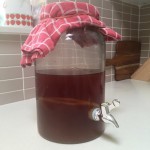
Brew your Kombucha in a glass vessel - Add the teabags and allow to steep until the water cools to room temperature (normally about 2 – 3 hours)
- Once cooled, remove the teabags and pour the tea mixture in to your brewing vessel (I use a glass beverage dispenser)
- Ensuring that your tea mixture is cooled to room temperature, slide the scoby in to the vessel and add the saved cup of Kombucha.
- Cover your vessel with a teatowel and an elastic band. This allows the Kombucha to breathe and keeps any nasties out.
- Leave in a moderately warm location for 7 – 10 days (7 in Summer, 10 in Winter).
- When it’s time to bottle, remove the scoby, place it in a glass/porcelain jug or dish and cover with 1/2 to 1 cup of liquid from the top of your brewed Kombucha.
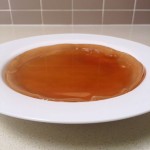
Keep your scoby in some reserved liquid while you’re doing your bottling - Pour the remaining Kombucha in to glass bottles, preferably with a wide neck (avoids any potential explosions). If you like to flavour your Kombucha, add this at the bottling stage. I like to add freshly grated ginger; roughly 1 tsp to each bottle. If we have lots of passionfruit around, I will add the pulp from one passionfruit to each bottle.
- I typically brew my new batch on the same day as I do my bottling so I start again from the first step and add the reserved scoby in to the new batch. If you don’t want to brew again immediately, place the scoby and liquid in a glass jar and refrigerate for a few days until you’re ready to use it.
Notes:
- The SCOBY is a living organism and what actually converts / eats the sugar and makes the fermented drink that Kombucha is. SCOBY is an acronym for Symbiotic Culture Of Bacteria and Yeast, and will continue to grow with each batch of Kombucha that you make. A new Scoby will grow on top of the existing one, and you can gently peel them apart and give one to a friend to start their own Kombucha brew.
- If you’re starting your first batch of Kombucha see if anyone you know who already brews Kombucha has a Scoby they can give to you, or otherwise they can be purchased online or at specialist health food stores.
- Each Scoby is good for a couple of batches of Kombucha (when they start to discolour you’ll know it’s time to dispose of it – I put my straight on the compost heap).
- There’s mixed views of whether or not you need to use tap or filtered water. I haven’t found it makes any difference so use water you prefer.
- You can use loose tea leaves (1 teabag = 1 tsp loose leaf tea) if you prefer, just remember to strain them out once they’ve steeped
- You can use many different types of sugar (raw, brown, rapadura, etc), however the type of sugar you choose will ultimately affect the brewing time (easier sugar to digest by SCOBY = shorter brew time) and the flavor profile of your Kombucha. I choose to use plain white sugar.
I’d love to hear from you if you make your own Kombucha… do you have other infused flavours that have worked well?

About Alison Clinch
Alison Clinch has 20 years marketing experience gained in small and medium size business. She is especially passionate about supporting local communities, communications, and brand management. In her role with The Free Range Butcher Alison is responsible for the company’s branding, promotion, advertising and website. Her experience in the kitchen and passion for good food also brings refreshing new ideas for our recipe suggestions. Initially working alongside her husband Ben at the farmers markets, Alison is more ‘behind the scenes’ now, and keeping busy with two young apprentices’ / kids, Tom and Georgia.
Comment
Leave a Reply Cancel reply
Latest Articles
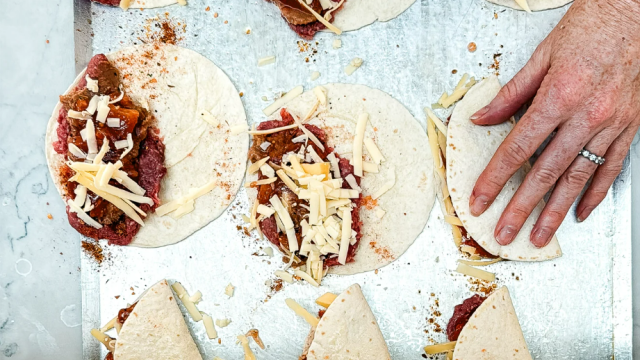
Cheats Tacos
These are the ultimate mid-week Taco night dinner because you don’t even have to brown off the meat. The family will love the taste, and the head cook will love how easy these are to make. Defina…
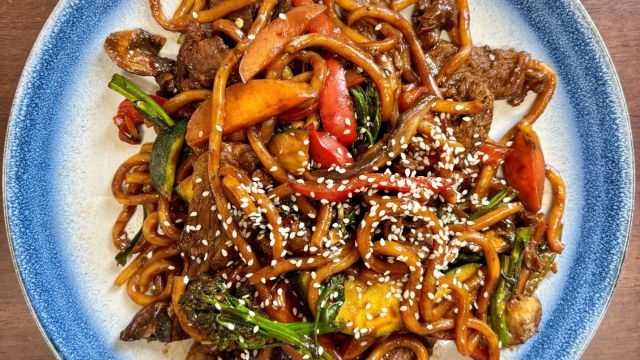
Beef Udon Stir Fry
This Udon Beef Stir-fry is a quick, flavour-packed dish that brings together tender beef, hearty noodles, and a mix of colourful vegetables in a rich, savoury sauce. Perfect for busy weeknights, it…
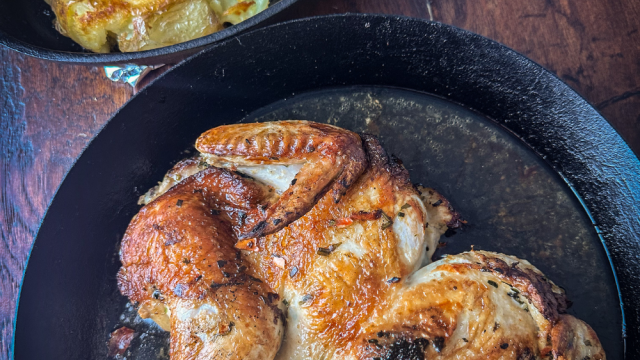
Roasted Butterflied Chicken
Our marinated butterflied chickens are perfect for an easy mid-week meal or entertaining on the BBQ. The butterflied chicken has the backbone removed but still contains the drumstick and wings. T…
Copyright © The Free Range Butcher.


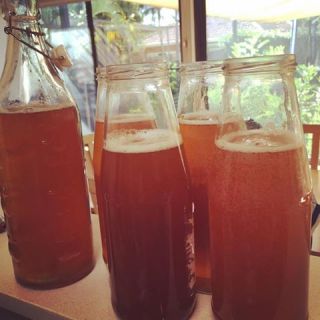
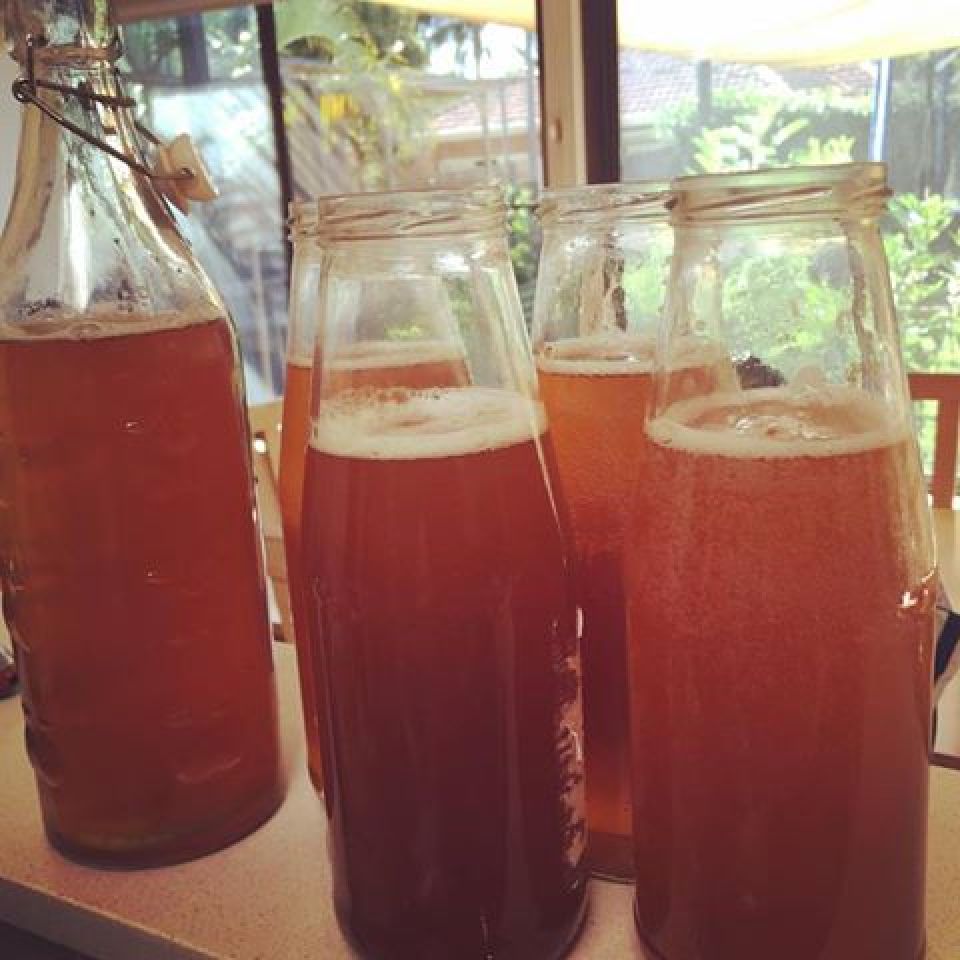





Hi Alison,
I have been disheartened with self brewing.
I was all ready to decant and it tasted good as is but when I lifted
fabric there were little wigglies on scoby so I had to throw away everything.
Hi Fran, Please don’t be disheartened. Did the “Wigglies” look like thick bits of string in the same colour and consistency of the scoby? If so, I have them on my scoby too and they’re perfectly normal. As the scoby is a living organism it changes and evolves and looks different at different times in the growth cycle. If the kombucha tasted good, I am pretty confident it would have been fine to drink. Please do try again. Best of luck, Alison